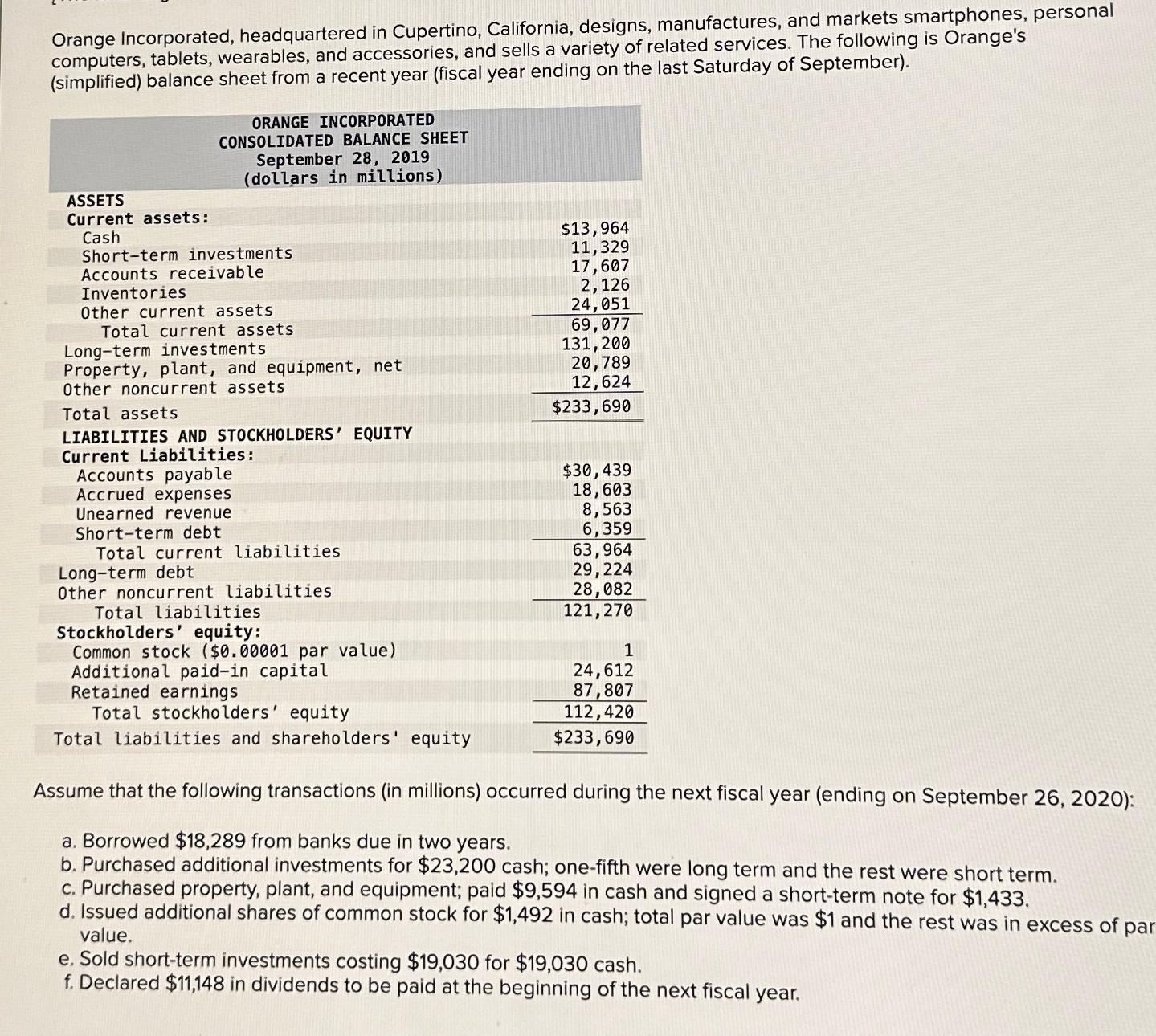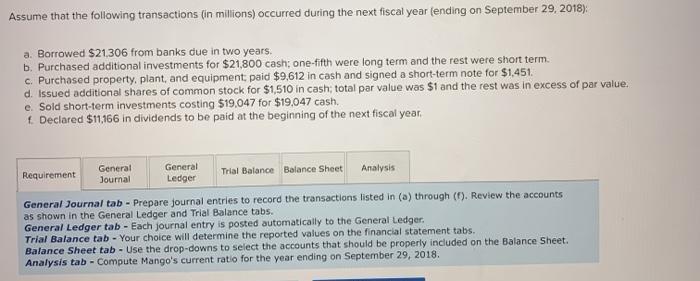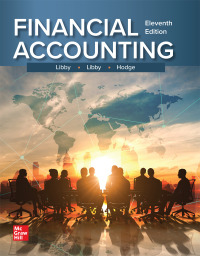Answered step by step
Verified Expert Solution
Question
1 Approved Answer
Orange Incorporated, headquartered in Cupertino, California, designs, manufactures, and markets smartphones, personal computers, tablets, wearables, and accessories, and sells a variety of related services.
Orange Incorporated, headquartered in Cupertino, California, designs, manufactures, and markets smartphones, personal computers, tablets, wearables, and accessories, and sells a variety of related services. The following is Orange's (simplified) balance sheet from a recent year (fiscal year ending on the last Saturday of September). ORANGE INCORPORATED CONSOLIDATED BALANCE SHEET September 28, 2019 (dollars in millions) ASSETS Current assets: Cash Short-term investments Accounts receivable Inventories $13,964 11,329 17,607 2,126 Other current assets 24,051 Total current assets 69,077 Long-term investments 131,200 Property, plant, and equipment, net 20,789 Other noncurrent assets 12,624 Total assets $233,690 LIABILITIES AND STOCKHOLDERS' EQUITY Current Liabilities: Accounts payable $30,439 Accrued expenses 18,603 Unearned revenue Short-term debt 8,563 6,359 Total current liabilities 63,964 29,224 28,082 121,270 1 24,612 87,807 112,420 Long-term debt Other noncurrent liabilities Total liabilities Stockholders' equity: Common stock ($0.00001 par value) Additional paid-in capital Retained earnings Total stockholders' equity Total liabilities and shareholders' equity $233,690 Assume that the following transactions (in millions) occurred during the next fiscal year (ending on September 26, 2020): a. Borrowed $18,289 from banks due in two years. b. Purchased additional investments for $23,200 cash; one-fifth were long term and the rest were short term. c. Purchased property, plant, and equipment; paid $9,594 in cash and signed a short-term note for $1,433. d. Issued additional shares of common stock for $1,492 in cash; total par value was $1 and the rest was in excess of par value. e. Sold short-term investments costing $19,030 for $19,030 cash. f. Declared $11,148 in dividends to be paid at the beginning of the next fiscal year. Assume that the following transactions (in millions) occurred during the next fiscal year (ending on September 29, 2018): a. Borrowed $21,306 from banks due in two years. b. Purchased additional investments for $21,800 cash; one-fifth were long term and the rest were short term. c. Purchased property, plant, and equipment; paid $9,612 in cash and signed a short-term note for $1,451. d. Issued additional shares of common stock for $1,510 in cash; total par value was $1 and the rest was in excess of par value. e. Sold short-term investments costing $19,047 for $19,047 cash. f. Declared $11,166 in dividends to be paid at the beginning of the next fiscal year. Requirement General Journal General Ledger Trial Balance Balance Sheet Analysis General Journal tab - Prepare journal entries to record the transactions listed in (a) through (f). Review the accounts as shown in the General Ledger and Trial Balance tabs. General Ledger tab - Each journal entry is posted automatically to the General Ledger. Trial Balance tab- Your choice will determine the reported values on the financial statement tabs. Balance Sheet tab Use the drop-downs to select the accounts that should be properly included on the Balance Sheet. Analysis tab - Compute Mango's current ratio for the year ending on September 29, 2018.
Step by Step Solution
There are 3 Steps involved in it
Step: 1
Lets recalculate the general funds fund balance at December 31 corr...
Get Instant Access to Expert-Tailored Solutions
See step-by-step solutions with expert insights and AI powered tools for academic success
Step: 2

Step: 3

Document Format ( 2 attachments)
664279432c288_979978.pdf
180 KBs PDF File
664279432c288_979978.docx
120 KBs Word File
Ace Your Homework with AI
Get the answers you need in no time with our AI-driven, step-by-step assistance
Get Started




